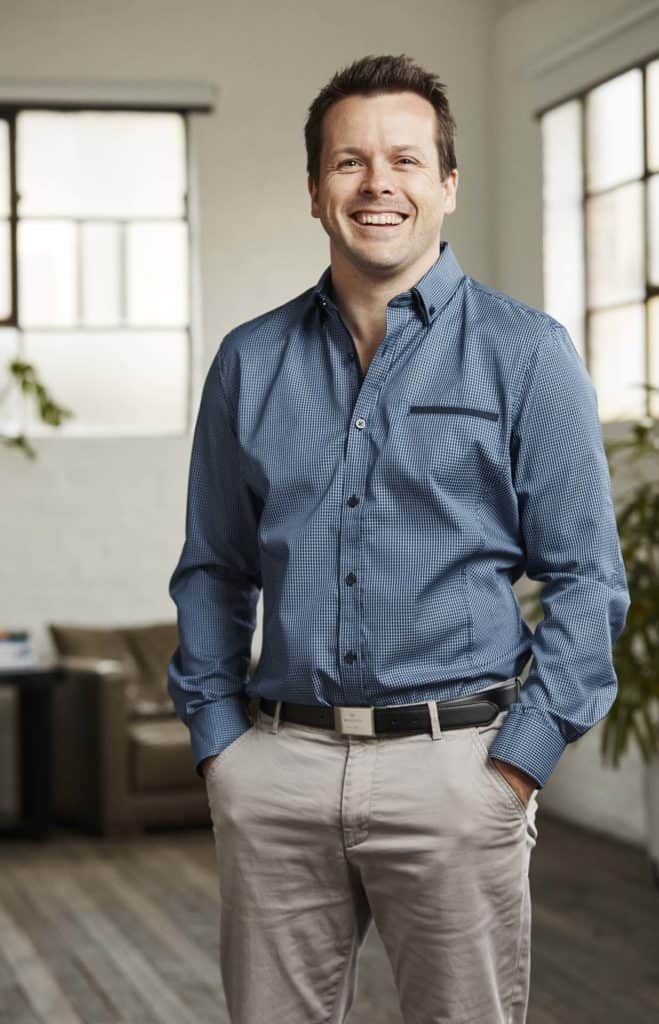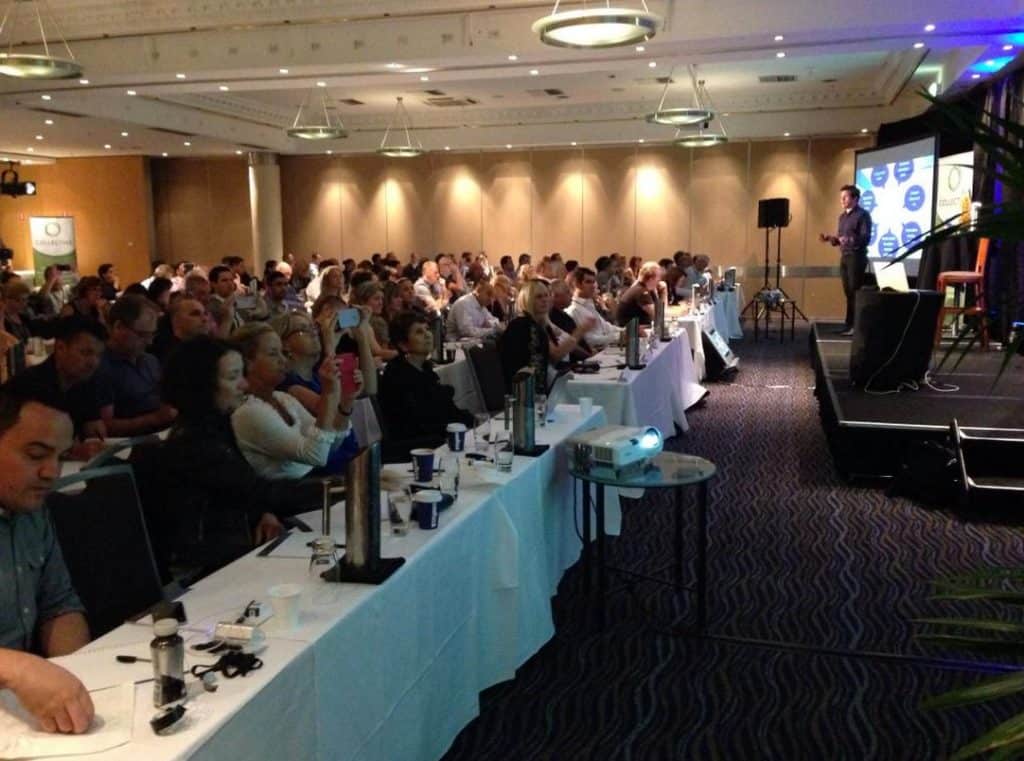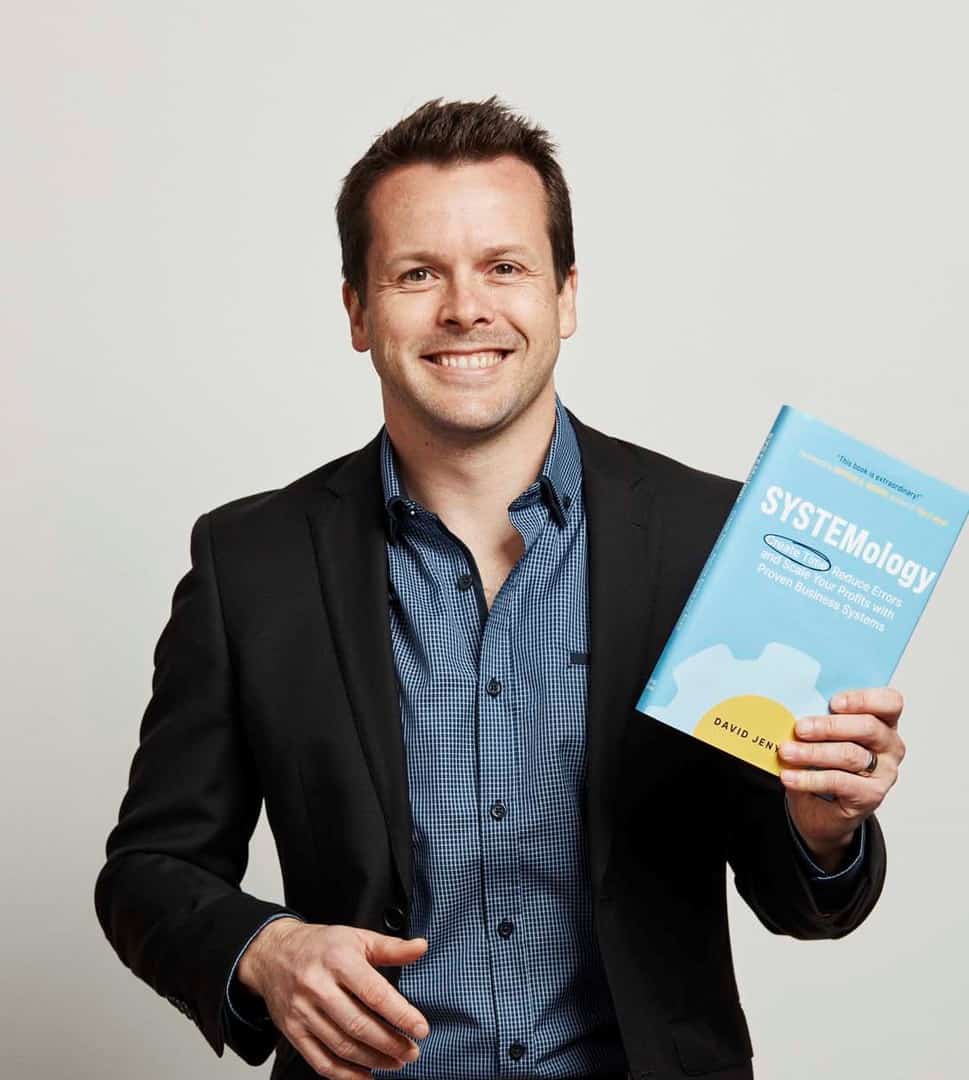Dave Jenyns is a serial entrepreneur. His book, SYSTEMology® has just been released, following on from his successful company and podcast of the same name.
Dave’s story
Dave grew up in Melbourne and attended the High School there. Shortly after leaving, he read a book called “The One Minute Millionaire” by Mark Victor Hansen (Chicken Soup Series) and Robert G Allen. One of the stories in the book is about a man called Paul Hartunian.
Hartunian got hold of some discarded wood from renovation work on the Brooklyn Bridge. He then did a massive press release to all the media, offering “part of the Brooklyn Bridge”. His coverage was vast, including a feature on the Jonny Carson show. He cut up this wood in tiny pieces, attached a fragment to a certificate, and sold it and made enormous sums. Many people have claimed to have sold the Brooklyn Bridge. Hartunian claims to be the only person who has sold it legally.
Dave was driving past the Melbourne cricket ground. In Australia, they are obsessed with cricket. Dave noticed that they were pulling down the Ponsford Stand and so he followed the trail, went to the wreckers and got a load of wood and carpet, and replicated the idea. You can still find how a Melbourne man sold the MCG for $24.95 Australian on Google. Dave says it was a wild first ride into business at 20.
His Dad had always been opportunity-seeking and got involved in different MLM’s, so Dave was listening to Amway tapes from a very young age. He just wanted to make money and felt the stock market was where to do it. He says it is a Sutton’s Law, so named after the bank robber Willie Sutton, who, when asked why he robbed banks, answered: “because that is where the money is.”

Dave had studied for a Diploma of Financial Markets with the Australia Securities Institute. He paid for it with a huge loan, which meant he ended up living in a two-bedroom flat with his mother with no money to trade. He leveraged his knowledge and strength in software, so he and a friend wrote a guide on how to use it.
He also became involved in rock and roll clothing stores. Dave was working to pay back the course stacking shelves in a supermarket. A guy working alongside him explained that he owned a clothing store but was determined to have someone else working there instead of him, to ensure the business was scalable. This guy had seen Dave’s MCG activities and suggested they scaled the clothing business together. They got it up to three, including one franchise.
Dave had already experienced designing a trading plan for his stock market course. Now the clothing business brought an understanding of systems needing to franchise and or scale.
With changes to the Australian financial advisor licenses, Dave and his partner decided to wind up the education business. The clothing business was proving too specialized (think ADC and Metallica T-shirts) to have much potential to scale and came to an end
Melbourne SEO Services also became the original case study for Dave to work on systems that would enable him as an owner to step back and let someone else run it. He succeeded, able to have a phone conversation a couple of times a month, drawdown some profits, and otherwise move on, both enjoying more time with his new son and into other business ventures.
Dave had already added a Video Production company and wanted to work on SYSTEMology®
SYSTEMology the Business:

Dave is a rare combination, a creative who likes systems. By 2016, had developed and applied systems that allowed him to step back from Melbourne SEO Services, but he could also see that this was an area with a desperate need.
Dave has become a recognized authority on the subject. He describes how applying them in his business not only allowed him to step back, but also tripled his bottom line.
The more Dave talked to other businesses, the more he saw of how both the need for his services and the blocks that prevented people from accepting them.
In one of his early talks, Dave describes what he calls the seven myths of business processes. In his new book, he expands these more, but many of us will identify with the seven here:
- Believing to systemize a business, you need hundreds of systems.
- That all the work of creating the systems falls on the head of the owner
- That it takes a long time to create the systems
- That the software needed is complicated and expensive.
- That your team won’t bother to follow them even if they are in place
- That the natural creativity of your team will dry up
- That you need to systemize “like McDonald’s“.
Dave explained this last one a bit more to me. He says that people assume you have to start with perfection, i.e., as streamlined as McDonald’s are now. Instead, it would be better to begin where McDonald’s was when they started, still learning, still refining. Dave destroys the other myths with equal effect.
Because of these inaccurate beliefs, business owners put off what they perceive as the horror of systemization. Systems never make it to the top of anyone’s to-do list.
The problem with a lack of systems is that it leaves most businesses battling for survival, endlessly firefighting with mixed results, and large amounts of time wasted in problem-solving. No one knows who is doing what or how it is supposed to be done.
The starting point is to extract the critical systems, the ones that the business really needs. The company may remain stationary during this process, but it is the start of change. From that beginning, the company can be organized for scale, by the key systems being put into place.
The final stage is that the business becomes optimized and can run by itself while you have a life elsewhere, or as it is now sellable, you can move on and capitalize on the profits that way.

Dave also hosts the BusinessSystemsSummit.com, has the systemHUB, and, since 2019 has been podcasting at the “Business Processes Simplified” podcast, where he interviews industry experts and discusses how the systems work.
Dave has plans to be able to help businesses across the world with his SYSTEMology teaching people how to do it themselves, helping them to do it or doing it all for them.
He is planning to achieve it by training a network of SYSTEMologists. He has developed his team and systems to enable him to help businesses everywhere scale-up.
SYSTEMology the book and for you:
This is Dave’s second book, his first being Authority Content. Free chapters and resources can be found here.
Dave is a great raconteur, and one of the stories in the book is how Michael Gerber of The E-Myth fame came to write the forward. For anyone who is not familiar with Michael’s work, Michael was the first to propound the theory of “working on your business rather than in it.”
He tells the story of how Luz Gerber, Michael’s wife, called him out of the blue, and asked hm if by any chance he knew the name of Michael E Gerber. Dave explains the story in more details in the book, but the short version is that Gerber had just drafted the last of the E-Myth books and wanted to self-publish and wanted someone to work with him on it.
It was a three-month project which most business owners cannot conceive of taking off from their business. Thanks to his systems, Dave was able to take the time and have the pleasure of working with Michael. The result was that Michael’s last book was the first to be ranked as an Amazon Best seller within 24 hours of its release.
When he worked with Michael, Dave found him to be a great eccentric, both in dress and the way he presented. Dave was surprised to find he was not a systems person but a creative despite what he writes about. Dave admits even he leans towards the creative side, but for most entrepreneurs, there is an epic blind spot over systems. They get excited about them, put them into place and then can’t get their people to use them.
The book takes you through seven steps to systemize your business. The start, Dave says, is a huge eye-opener when he works with clients and takes them through their Critical Client Flow and they see He explains how if you can document one client, one product and one journey that is your critical client flow and the basis of your focus and plan.
The next step is to assign which he recommends the owner of the business is mostly left out of, which must bring many an entrepreneur to their knees with joy, and actually get them past the belief that only they can do things.
The next step is extracting the knowledge those people have, then organize, integrate, scale and optimise. By the time you even get to scale, Dave is not only talking about your business growth but telling you to go on holiday simultaneously. The saleable is the point any savvy owner knows they need to get to. You may not want to sell now or even see it happening in the future, but having the option is the golden ticket.
The praise for the book from business titans is extraordinary. Among the comments, Traction’s Gino Wicks calls it “a must for any business owner”, Jack Daly (author of Hyper Sales Growth) says “What Gerber started, David Jenyns completed”.
The book and the systems give business owners back their freedom of choice. Gerber himself says in the forward “Read it. Relish it. But most important, DO it”.

You might also enjoy interviews with other Australian Entrepreneurs including Adrian Falk

